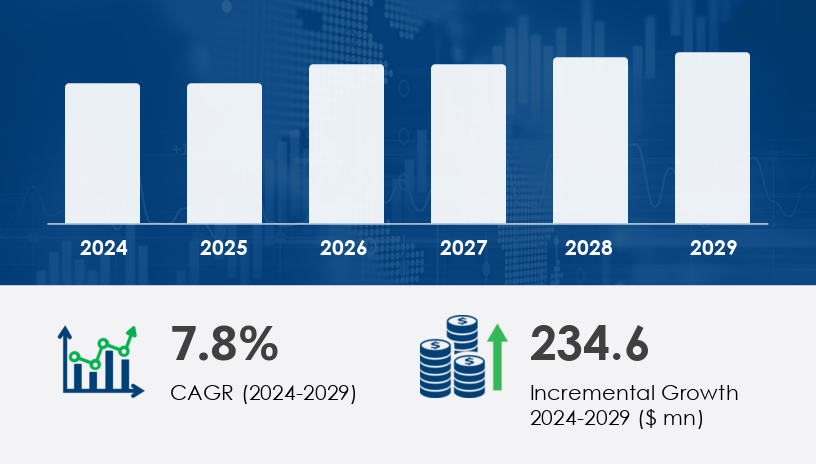The fuel cells for marine vessels market is projected to grow by USD 234.6 million from 2024 to 2029, charting a CAGR of 7.8%. As global decarbonization targets intensify, this emerging propulsion technology is becoming a cornerstone of the maritime sector’s shift toward cleaner and more efficient energy systems. This 2025 Outlook offers a comprehensive guide and strategic insights into how the market is evolving and where opportunities lie—particularly in commercial applications, R&D innovation, and geographical hotspots like APAC and North America.For more details about the industry, get the PDF sample report for free

Fuel cells for marine vessels refer to electrochemical devices that convert hydrogen fuel into electricity, offering a zero-emission alternative to traditional diesel propulsion systems. These systems are particularly attractive for their environmental benefits, such as reducing greenhouse gas (GHG) emissions, lowering operational noise, and improving energy efficiency.
The commercial segment—valued at USD 183.10 million in 2019—is projected to see substantial growth due to tightening environmental regulations and cold ironing requirements at ports. Hybrid systems combining fuel cells and batteries are proving highly effective for ferries and smaller vessels.
The military segment is increasingly integrating fuel cells for auxiliary and stealth-based propulsion systems, notably through U.S. Navy programs like ONR’s 500 kW PEMFC trials. The "others" segment includes research vessels and private yachts, reflecting early-stage adoption.
PEMFCs dominate due to their compact size and rapid start-up capability, ideal for marine usage.
SOFCs are gaining interest for larger vessels where higher efficiency and operating temperatures are advantages.
These include molten carbonate and alkaline fuel cells, used in niche applications or ongoing R&D efforts.
With 45% of global growth, APAC—led by China, Japan, India, and Australia—is aggressively adopting fuel cell technologies across commercial shipping and port electrification.
The U.S. leads with institutional support, such as the Department of Energy’s National Energy Technology Laboratory and the historic U.S. Navy ONR fuel cell program, which tested 500 kW and 625 kW systems between 2000 and 2011.
Germany and France are driving European growth, while the UAE and Brazil are showing early interest through clean port initiatives and ship retrofitting pilots.
Get more details by ordering the complete report
The Fuel Cells for Marine Vessels Market is gaining traction as the maritime industry shifts toward zero-emission vessels and clean energy vessels to meet global decarbonization targets. Central to this transformation are technologies such as hydrogen fuel cells, PEM fuel cells, and SOFC fuel cells, which are emerging as viable alternatives to traditional marine propulsion systems. These marine fuel cells are increasingly used in vessel propulsion and ship propulsion, supporting initiatives in green shipping and sustainable marine operations. Advancements in hydrogen propulsion and electric propulsion highlight the market's emphasis on marine decarbonization and clean emissions reduction, while also aligning with global goals for marine energy efficiency. The development of robust fuel cell systems and scalable fuel cell modules is vital to driving adoption across both short- and long-range eco-friendly ships and low-emission vessels.
The global shift away from fossil fuels is pressuring marine operators to explore zero-emission alternatives. Fuel cells are now being considered for both primary propulsion and auxiliary power, replacing diesel engines.
R&D efforts are intensifying to lower system costs and improve durability. Companies like Ballard Power Systems and Plug Power Inc. are leading the charge by innovating in system architecture and integrating better power electronics.
Fuel Efficiency: Fuel cells improve operational efficiency by converting chemical energy directly into electricity.
Emission Reduction: They emit only water vapor—key for meeting IMO 2050 goals.
Modular Integration: Easily combined with batteries and solar systems for hybrid solutions.
Marine propulsion requires rugged systems that withstand vibration, salt corrosion, and variable load demands—making system durability and resilience a top concern.
Hydrogen fuel storage and bunkering infrastructure remain underdeveloped, especially outside major port cities.
For more details about the industry, get the PDF sample report for free
Invest in Hybrid Designs: Focus on modular systems that combine batteries and fuel cells to balance peak load demands.
Collaborate with Port Authorities: Develop onshore hydrogen refueling stations through public-private partnerships.
Engage in Pilot Programs: Government-backed pilots offer reduced risk and valuable performance data.
Monitor Regulation Timelines: Stay ahead of IMO and national mandates to avoid penalties and costly retrofits.
Extensive research is focused on enhancing fuel cell integration and improving hydrogen storage solutions to support the evolution of hydrogen-powered ships and hydrogen vessel systems. The performance of fuel cell technology in maritime environments is being optimized through innovation in marine power systems, fuel cell applications, and ship energy solutions. With increasing interest in maritime hydrogen and marine hydrogen, stakeholders are examining how marine fuel technology can support next-generation vessels. Key considerations include fuel cell durability, fuel cell efficiency, and fuel cell scalability, all of which contribute to greater fuel cell reliability in demanding conditions. As marine propulsion systems evolve, the integration of hydrogen fuel storage, hydrogen ship propulsion, and hydrogen marine systems is enhancing marine vessel energy performance. This progress is crucial for building a resilient and sustainable maritime clean energy ecosystem.
Get more details by ordering the complete report
As more governments enforce zero-emission mandates for ports and marine corridors, early adopters of fuel cell technologies will gain competitive and reputational advantages. From passenger ferries in Europe to naval vessels in North America, the next five years will define which technologies emerge as standards.
Long-Tail Keywords in Use:
hydrogen fuel cell propulsion for marine vessels
marine vessel fuel cell market trends
fuel cell auxiliary power systems in shipping
zero-emission maritime propulsion technologies
The fuel cells for marine vessels market is at a pivotal moment. With a projected USD 234.6 million growth by 2029, the momentum is undeniable. Stakeholders—from shipbuilders to naval defense bodies—must embrace this technology or risk obsolescence in an increasingly carbon-constrained world.
For more details about the industry, get the PDF sample report for free
Safe and Secure SSL Encrypted